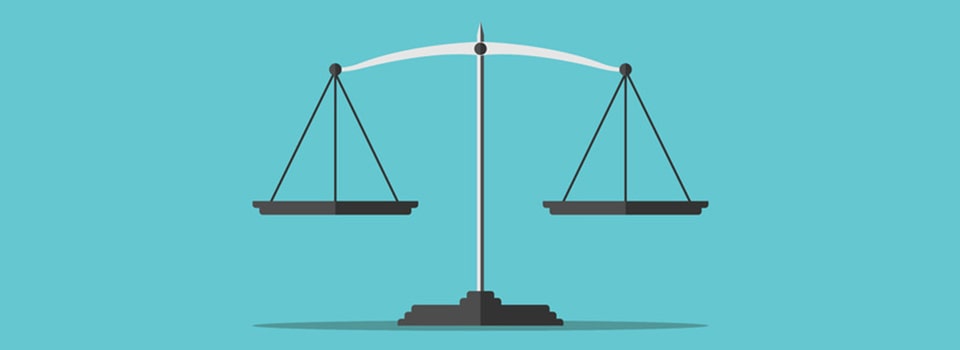Warehouse and distribution centre (DC) design is a fascinating and absorbing topic, but alas, is often misunderstood. Regrettably, few people fully understand the discipline of warehouse design and because of this, literally thousands of facilities are underperforming.
To assist designers, I will outline seven key principles applicable to a warehouse or DC design, compiled from a review of literature, discussions with industry specialists and materials handling companies, plus my own design experience gained over many years and projects.
One warning before I begin. The principles will not make you into a seasoned designer, but they will help you understand the salient aspects of the design task, and help you plan your facility for optimal performance.
1. Determine the Objective of the Facility

In a recent web discussion with a number of warehouse professionals, I asked what they believe to be the critical principles of effective warehouse design. This principle ranked at top of the list. The first step is to define the objectives and goals of the facility. For example:
- Why will it exist?
- What market does it serve?
- Is it part of a network?
- What types of goods will be stored?
- What is the anticipated life of the facility?
- Will it be a green-field site or an existing facility?
It is vital to write these objectives down so that all associated parties remain cognisant of the expected outcome – especially when timing, budget, or resource issues during the project tempt stakeholders to compromise operational or design goals.
Why Does This Matter?
The efficiency, effective utilisation, running costs, working environment of your warehouse all depend on its fitness for purpose. This becomes even more important as distribution and fulfillment processes change in line with the shift toward omnichannel sales.
Few warehouses are merely storage facilities these days, and the last thing you want is to have to extend your facility or outsource certain activities just because of inadequate design considerations.
The objectives you have in mind for your facility should influence its size, physical design, its proportion of indoor warehousing versus outside yard space, its location, dimensions, and structural composition, along with provisions to be made for specialised equipment installations and division between storage and working spaces.
2. Define Volumes and Functional Requirements

The famous British Physician Dr. Thomas Fuller once said, “Get the facts, or the facts will get you. And when you get them, get them right, or they will get you wrong”. This is an important lesson that was also affirmed by my learned web colleagues, and certainly one that has guided my own work throughout my career. Quite simply, the facts needed are:
A) Quantities of products to be stored.
B) The throughput velocities, including incoming goods, customer orders, inter-facility transfers, dispatches, and returns.
C) The nature of orders and specific picking requirements, e.g. is picking performed in containers, pallets, cartons, inners, or single units?
Now if you are thinking that this is easy, think again. It is one of the hardest and most time-consuming components of a design project. Why? Because rarely do enterprises have such data readily available. Designers must therefore ‘mine’ it from the enterprise as best they can.
In cases where data is piecemeal or nonexistent, the designer must draw from experience to fix assumptions around volumetric estimates. This can be particularly challenging when heavy scrutiny is placed on the designer to prove the concept, and is best performed with the collaboration and agreement of the stakeholders involved.
It can also make a lot of sense to enlist some external help, perhaps from a warehouse design consultant, for this stage in the project. Any such expert should have the expertise and experience to conceive and develop a warehouse design using whatever data is available, and to extract the data efficiently.
D) What functions need to be provided for?
It’s imperative that the designer understands all of the functions to be included on the site footprint, e.g. warehouse, offices, gantry cranes, loading docks, forklift-charging areas, dangerous or hazardous goods, cool or cold rooms, clean rooms, manufacturing or packaging operations, staff facilities, etc. It is equally important that relative dependencies between functions are determined, so that the designer can correctly frame functional proximities for best flow and operation by staff.
Why Do These Things Matter?
Warehouses are expensive capital investments, so when you design a new one, you want to be sure your business will not outgrow its volumetric capacity or throughput capabilities too quickly.
That’s exactly what will happen if, for example, you underestimate the quantities of products your warehouse must comfortably hold. I say “comfortably” because you never want your warehouse to be running at 100% of physical capacity. After all, aside from anything else, you need a fair amount of working space.
It’s not just about storage space though. You will need to make sure you calculate, for example, how many intake doors will be optimal for your volumes of incoming goods.
If you have too few goods-in doors, you may suffer bottlenecks in your goods-receiving processes, which not only influence your own operation, but those of your suppliers too. While planning too many doors might not affect your operation, it will add unnecessary cost to your warehouse design and build.
3. Match Storage Modes, IT Systems and Mechanised Technologies with Volumes
Once the data has been analysed, the designer is ready for equipment selection. Be it static racking equipment, mezzanines and the like, or mechanical equipment such as conveyors, carousels, stacker cranes etc., all equipment and systems must be applied according to their purpose, limitations, and suitability for the volumes handled.
For instance, it is a waste if an automatic storage and retrieval system is installed, when a conventional racking system will suffice. Equally, if the facts justify a high-velocity automated system, it is foolish to ignore them for the sake of a more conventional system.
One critical aspect of equipment selection is that the designer has an expert understanding of the equipment and technology available, and knows how to apply them.
This is a complex area and deserves careful consideration. Novice designers should consult material handling equipment and software suppliers, builders, and industry specialists to ensure the design is well founded, robust, and practical.
4. Flow
This aspect incited some interesting comments from my web conference colleagues. From their counsel and my own experience, I suggest that the skillful designers apply two immutable laws of flow.
A) One-way flow
The best warehouse operations are those adhering to this principle. Whether straight, clockwise, counterclockwise, up or down, make sure the flow is one-way only. But here is a tip… Be cautious when dealing with international customers, whose cultural or religious beliefs may drive specific requirements. An interesting challenge that I experienced on a recent project was the Hindu philosophy of Vaastu Shastra.

The customer politely stipulated that the warehouse flow should be clockwise, heavy goods should be stored in the south-west, with lighter products in the northeast. The front door and offices should face east with entry to the site from the north. This provided an intriguing set of constraints that I happily applied to the design of the site and building. The key point here is that despite restraints, the designer should stick to the one-way flow principle.
B) Flow versus Capacity
The second rule of flow is that free movement has priority over storage capacity. If you are pressed with a choice, the pundits agree that it’s better to hold flow sacrosanct, as opposed to building more stock or storage equipment.
Why? Because long after the warehouse construction is complete, a team has to work efficiently and safely in the warehouse year after year. If the design compromises on the size and quantity of aisles, for the sake of more stock holding, beware the possibility of suboptimal performance over the facility’s lifetime.
5. Close to Zero Material Handling

A simple rule that says it all: keep manual handling of products to a minimum—ideally no more than 3-5 touches while goods are in the warehouse. Sadly, I have witnessed operations that handle goods as many as eight to ten times. Severe design or building constraints are often at the root of such situations. But the outcome is evident in the maxim: ‘more touches, more cost’. Take note!
Reduction of handling is one of the primary objectives of warehouse layout optimisation, because even with a well-designed warehouse facility, there can be a tendency over time for processes to lose efficiency due to changes in throughput, product ranges, or other elements of the warehouse operation.
That’s why we always recommend our clients to revisit their layout design from time to time, and, if concerns arise about an excessive number of inventory touch points, have us review the layout and offer some ideas and suggestions for optimisation, which is just one of the key warehouse design services that we offer.
6. Evaluate your Options
The developed concept design options must be evaluated to ensure that objectives are achieved. The two common approaches to assessment are:
A) Quantitative analysis: Return on investment, payback, cost per order to supply, cost per order cubic metre to name just a few.

B) Qualitative analysis: Reviewing the advantages and disadvantages of options considered. Ideally, the evaluation is best performed both individually and in a team workshop environment. It is amazing what can be revealed when a team collectively focuses its attention on a project. Despite the meticulous job the designer may have performed, a workshop can often reveal a late insight, idea, or missed detail that can adversely affect the final design.
7. Consult Widely as the Design Process is Multifaceted, Involving Executives, Managers, Operators, Equipment Suppliers, Builders, Architects, and Councils
As part of the development process, all should be regularly consulted on planning and legal matters, operational needs, preferences, ideas, and opinions.

In my experience, no single party has all the background and knowledge to implement a DC project. The best implementations feature a cohesive and dedicated team charged with managing the project from early design through to completion.
A Cautionary Tale About Warehouse Design
I thought I’d add the following tale to demonstrate just how easy it is to make warehouse design mistakes. The subject of this tale is a company that failed to consider principles 3 and 4 correctly. Their decision impacted the efficiency of one of their largest distribution centres for its entire lifespan.
What makes this story interesting is the fact that the company (a global brewing enterprise) commissioned two almost identical distribution centres for construction at the same time. The warehouses were to hold two types of beer. One type required cold storage to maximize shelf life, while the other type was pasteurized and hence, had a much longer life.
Though the main structural design for both warehouses was identical, the regional management teams responsible for each, was given a free hand to design the interior layouts, including the exact location of the internal cold storage rooms. Because of the twinning aspect of the project, the effects of design decisions were especially clear, discernable by comparison of post-implementation performance.
A Tale of Two Cold Stores…
The cold stores were large, consuming around a fifth of the total warehouse footprint, and would have large entrances for forklift access and egress.
One team chose to locate the cold store in a corner of the warehouse, with a single door for access. The other team viewed a cold store with large doors at either end, located right in the center of the warehouse as more efficient for pallet handling. One door would face the receiving end of the warehouse, and the other would face the dispatch area, which certainly sounds like an efficient approach.
However, it proved not to be the case. After the warehouses began operating, it became apparent that internal design choices brought very different results for each of the regional operations.
The team that chose the centrally located cold store experienced higher labor costs. This was because although cold store access and egress routes were efficient, the volume of cold-stored beer was considerably less than that of the products that could be stored at ambient temperatures.
…And Two Very Different Outcomes
Worse still, over time, cold-stored product volumes began to decline as changes arose in the company’s retail and wholesale market. The centrally located cold store effectively became a large, immovable obstacle occupying prime space that could otherwise be used for pick faces for fast-moving products, which is precisely how the equivalent space was used in the other warehouse.
With the fridge in the warehouse centre, picking/put-away routes had to go around it, lengthening travel distance/time to an extent that demanded a larger workforce than the sister warehouse.
Just to add insult to injury, the centrally located cold store also cost more to operate, as two specialised air dams were required to stop cold air escaping from each of the two doors, while the cold store in the other warehouse had only one door and hence, one air dam.
The Takeaway from This Tale
If there is a moral to this cautionary tale, it is that when designing warehouses, especially those that will perform multiple functions, it pays to treat the process a little like a chess game, and think about all the ramifications of each potential design decision before committing to it.
It is easy to make mistakes, and once made, they can be very costly. That’s why I can’t recommend strongly enough that you engage external help, preferably from a design or consulting company with a strong reputation and successful record of build projects across a range of industrial domains.
A Bonus Tip to Take Onboard
Well, that concludes this short article on the Seven Principles of Warehouse and DC Design. I trust that you will find it useful, and that your enthusiasm for the design process will be sparked or invigorated. However, there is one more design tip that I would like to share.
Please be mindful that the design of warehouses generally flows from the inside out, not from the outside in. In other words, design the materials handling system before the building.
This is most important to remember when dealing with architects and construction companies who are well qualified at ensuring the best construction and décor of a new building, but not necessarily at designing the best materials handling operations.
From Tips to Hands-On Help – Warehouse Design Services From Logistics Bureau
That’s all for now dear reader… I wish you all the best in your pursuit of high-performance warehousing operations. Of course, if you should need some help with a warehousing project, the team here at Logistics Bureau is ready and waiting to get involved.
Our warehouse design services cover the entire spectrum, from advice and help with MHE selection and procurement, through design, layout, and operations audits, to planning and interior/exterior design of new warehouses and warehouse layout optimisation.
In fact, whatever your warehouse design concerns or requirements may be, our team can help.
For a more detailed overview of what we do, please stop by our warehouse design services page, where you’ll also find details of how to get in touch and arrange a FREE initial consultation.
Editor’s Note: The content of this post was originally published on Logistics Bureau’s website dated May 24, 2022, under the title “The 7 Principles of Warehouse and Distribution Centre Design“.


